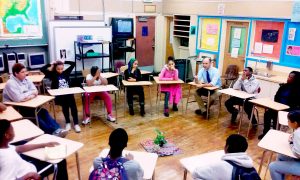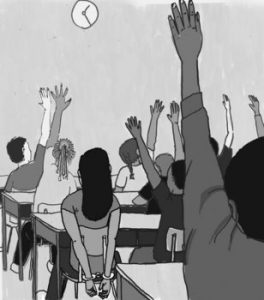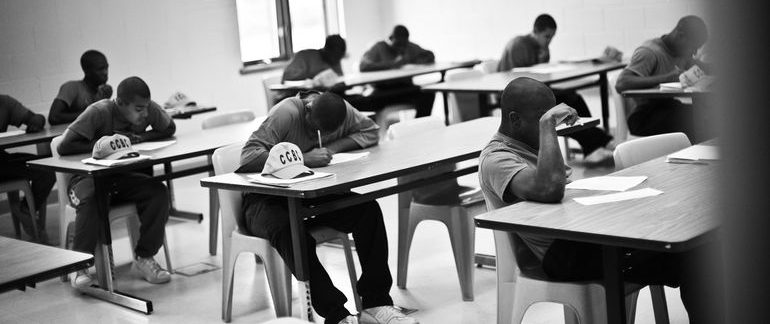As one might imagine, the persistence of zero tolerance policies in schools exists due to there being an argument for its retention as well as the acknowledged criticisms of its continuance. The articles discussed below are a discussion of just that. Richard Ullman, a veteran school teacher hailing from Allegheny, New York, argues for retention in his article published in Education Week, “Restorative Justice: The Zero-Tolerance-Policy Overcorrection.” Joie Acosta, Matthew Chinman, John Engberg, and Catherine Augustine find themselves leaning on the opposite spectrum calling for in their article a new way of approaching discipline titled, “Rethinking Student Discipline and Zero Tolerance” which was also published in Education Week. This article provides the other side of the argument through an introduction and advocacy for Restorative Justice as a means to keep students in school and more productive rather than the potentially detrimental outcomes of suspensions.
Restorative justice is defined by Acosta and fellow authors as a means to create “lasting behavior” through student empowerment seen in three principle practices:
- “Giving [the students] a voice and allowing them to participate in decision making in school;
- Asking them to take responsibility for their actions as they try to repair the harm done and help others; and
- Teaching them how to express their feelings and have empathy for others.” (Acosta, Chinman, Engberg, & Augustine, 2015, para. 6)

npr.org A look at a “circle”: small group discussions aimed at maintaining a positive learning environmnet.
Ullman on the other hand boils down restorative justice as a practice of correction and counseling with ultimate intent, “to keep students in school rather than suspending or expelling them.” (Ullman, 2016, para. 3)
The definitions of both find themselves in relative accord yet there are divergences as to whether or not the practice is better than zero tolerance. As seen in Ullman’s title, he finds restorative justice to be an overcorrection, but goes on further to attribute this as a product of an equally over reactionary federal and state education bureaucracy. This is highlighted as problematic for Ullman since those implementing the policy of restorative justice are, “far removed from the pedagogical trenches…” (Ullman, para. 10)
Yet by simply evaluating who implements the policy, is the failure to evaluate the outcomes of the policy as effective.
Acosta writes of the preliminary evidenced benefits for restorative justice supported by research institutions publishing data that shows restorative practices as having fewer racial disparities between white and black students. Similarly there is evidence that shows fewer suspensions handed out. (Acosta, Chinman, Engberg, & Augustine, para. 8)
The claims above are acknowledged as not being entirely conclusive yet, there is work being done currently in Maine, by RAND that will evaluate the effectiveness of restorative justice. There is also work being done by the U.S. Department of Justice studying its effects as well. (Acosta, Chinman, Engberg, & Augustine, para. 10)
However Ullman does present some counterclaims to the perceived benefits. Ullman notes that just because there are fewer suspensions, does not mean there are fewer infractions. He also draws into question the cost of trying to retain more persistently disruptive students with the non-disruptive ones. This also does not take a full defense of zero-tolerance as evidenced by his acknowledging, “the elephant in the classroom…” and that being the racial disparities in punishments and its association to the school-to-prison pipeline. (Ullman, para. 14)

Rethinking Schools
Thus both Ullman and Acosta’s team hold valid points. There is evidence to suggest restorative justice as having benefits as seen in the latter. The former points to a criticism of restorative practices as being genuinely. Both articles however call for an evaluation of the effectiveness of zero tolerance and restorative justice policies and their effects on who has been at the center of all of this from the start: the students.

